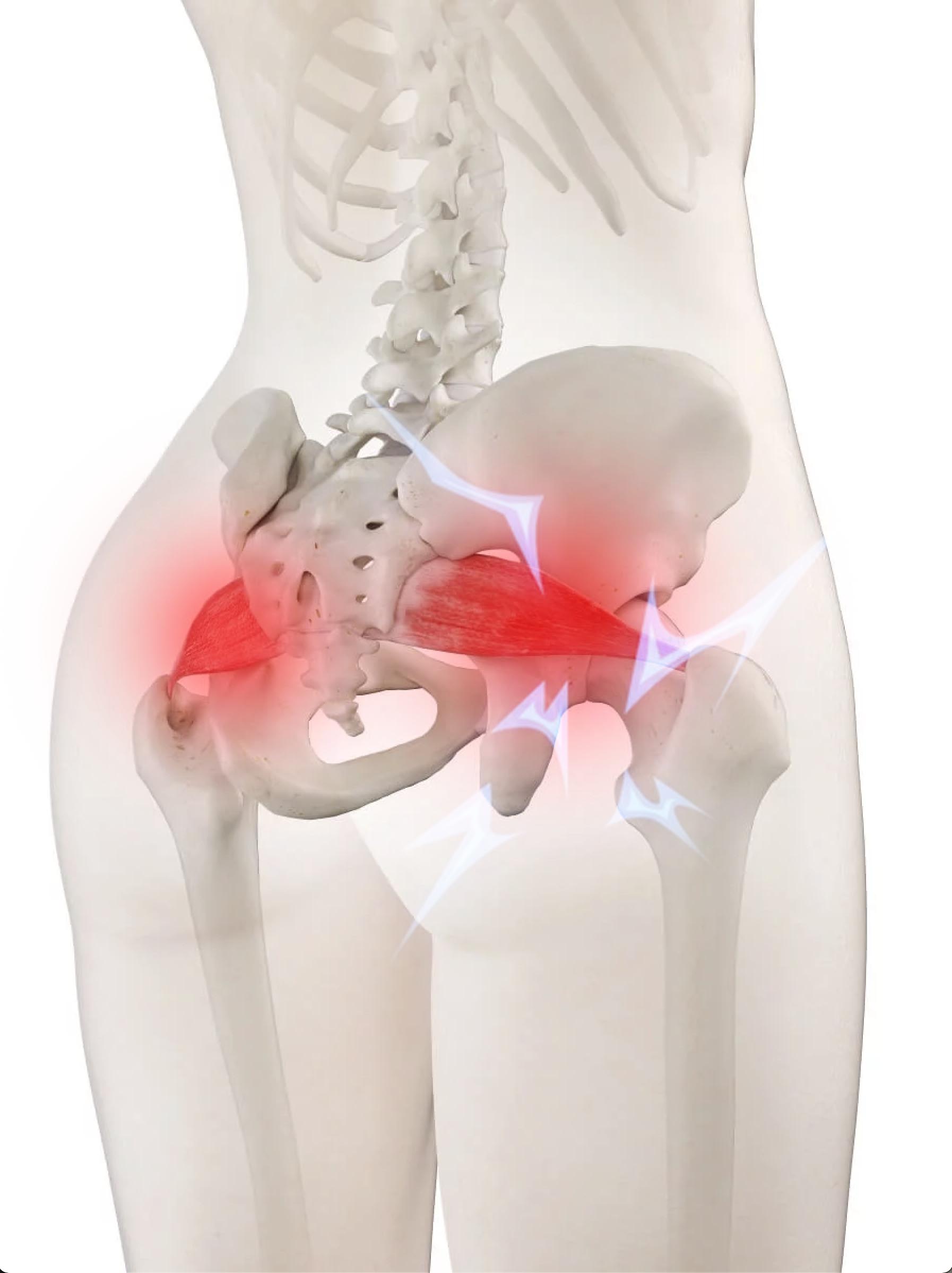Sciatica | Prolonged Sitting and Incorrect Postures: Are You at Risk of Piriformis Syndrome?


Meet an office worker who spends long hours sitting without much physical activity. During a hiking trip that lasted over 6 hours, she experienced intense pain deep in her buttocks the next day. The pain extended down the back of her thigh, making it difficult to walk. It turned out that her habit of crossing her legs had caused a misalignment in her pelvic bones. The sudden increase in physical activity triggered spasms in her piriformis muscle, irritating the sciatic nerve, leading to a diagnosis of piriformis syndrome.
The piriformis muscle is located in the buttocks on both sides and is one of the deep muscles in this area. According to registered chiropractor Yau Hoi Ying, "On one side, the piriformis muscle is connected to the sacrum, and on the other side, it is connected to the thigh bone. This allows the piriformis muscle to assist in stabilizing the hip joint. It is also responsible for hip joint movements, such as external rotation and extension of the thigh, which are used during activities like walking and climbing stairs. The piriformis muscle is primarily controlled by the S1 and S2 spinal nerves."
Can Cause Pain Down to the Calf
For most individuals, the sciatic nerve runs beneath the piriformis muscle. When the piriformis muscle tightens, swells, or becomes inflamed, it can easily irritate or compress the sciatic nerve, leading to piriformis syndrome and causing sharp pain, soreness, or numbness. The pain can extend to the buttocks, back of the thigh, calf, and even the foot, with increased intensity when sitting or squatting. Yau Hoi Ying explains that sedentary office workers, those with poor sitting posture, prolonged sitting on hard surfaces, drivers, athletes, individuals who engage in long walks, people with leg length discrepancies, as well as those who have previously experienced injuries to the hip joint, pelvis, or buttocks, are more likely to experience piriformis muscle issues.
Joint Realignment and Muscle Relaxation
The primary approach to managing piriformis syndrome is through conservative treatment aimed at alleviating symptoms, relieving piriformis muscle spasms, and reducing irritation of the nerves. Yau Hoi Ying explains, "As a chiropractor, the first step is to conduct a detailed examination to determine whether the pain is caused by the piriformis muscle. The nearby joints, such as the lumbar spine, sacroiliac joint, and hip joint, are also examined." In the case of the mentioned office worker, the chiropractor corrected the misalignment of the pelvic bones using manual techniques to reduce strain on the muscles and nerves. Additionally, electromagnetic wave therapy was used to relax the muscles in the buttocks and provide relief. Depending on the situation, other methods such as interferential current or shockwave therapy may also be employed.
Massage and Stretching for Pain Relief
On the other hand, patients can also perform self-massage on the buttock area to relieve muscle tension. For example, placing a massage ball on the sore area of the buttocks and applying pressure by sitting on it can help. However, it is important not to exceed 5 minutes during the massage. Stretching exercises for the buttock muscles can also be beneficial, but Yau Hoi Ying advises caution and recommends stopping if any pain arises. It is advisable to consult with healthcare professionals before attempting any stretching exercises, as improper stretching may worsen the symptoms.
Strengthening the Glutes for Prevention
To prevent piriformis syndrome or its recurrence, Yau Hoi Ying suggests maintaining good posture in daily activities, avoiding prolonged sitting, and frequently changing positions. It is also important to refrain from crossing legs habitually. "Exercising and strengthening the gluteal muscles can help protect the pelvic bones and hip joints. Patients should also undergo regular check-ups to correct any misalignment of the pelvic bones and sacrum, preventing excessive tension in the piriformis muscle."
Related Brands


